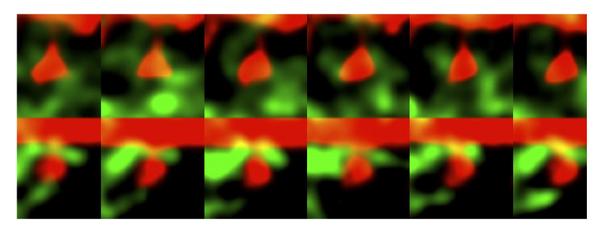A breakthrough in understanding brain-learning processes

© 2014 Thinkstock
Professor Dominique Muller, co-director of the National Center of Competence in Research, Synapsy, and his team at the University of Geneva, have discovered a new cellular mechanism that plays a role in long-lasting neuronal connection stability. Excitingly this mechanism reveals a previously unsuspected and important role for non-neuronal cells called astrocytes. The results, published in Current Biology, may lead to a better understanding of neurodegenerative and neurodevelopmental diseases.
Throughout our life our brain changes as a result of what we learn and remember. In fact, the brain is made up of complex neuronal networks and synapses that constantly reshape in response to new knowledge acquisition.
Of course to remember what we learned, to record, some of the changes need to be stabilized.
The excitatory synapses of the central nervous system form contact points between neurons and allows neurons to transmit signals. The synapses are highly dynamic structures that continually form and disappear. Non-neuronal glial cells surround them, including astrocytes easily recognisable by their typical star-shape. The astrocytes form complex structures around the synapses and appear to play an important role in learning and memory processes; a role that was little known until now.
The Geneva scientists observed that increased neuronal activity after whisker stimulation in adult mice lead to increased astrocyte movement around synapses in the somatosensory cortex and hippocampus of these mice. Increased astrocyte motility lead to protective architectural changes and correlated with synapse survival.
Using novel developed techniques that allow specific synapse structures to be “targeted”, Dominique Muller and his team showed that this phenomenon only occurred at connections between neurons involved in learning processes.
“In summary the more the astrocytes surround the synapses, the longer the synapses last allowing the learning process to be recorded as a memory,” explains Yann Bernardinelli who is the first author of the paper.

Plasticity of the astrocytic processes (green) around a dendritic spine (red) in a post-synaptic receiving neuron structure transferring a sensory impulse.
© UNIGE - Prof D. Muller's Laboratory.
This study reveals a novel bidirectional interaction between neurons and astrocytes in which learning processes regulate the structural plasticity of surrounding astrocytes, which in turn determines the fate of the synapse. This mechanism may therefore represent an important contribution of astrocytes to learning and memory processes and deserves investigation in a number of neurodegenerative and neurodevelopmental disorders such as Alzheimer’s disease, autism and fragile X syndrome in which these essential processes are impaired.